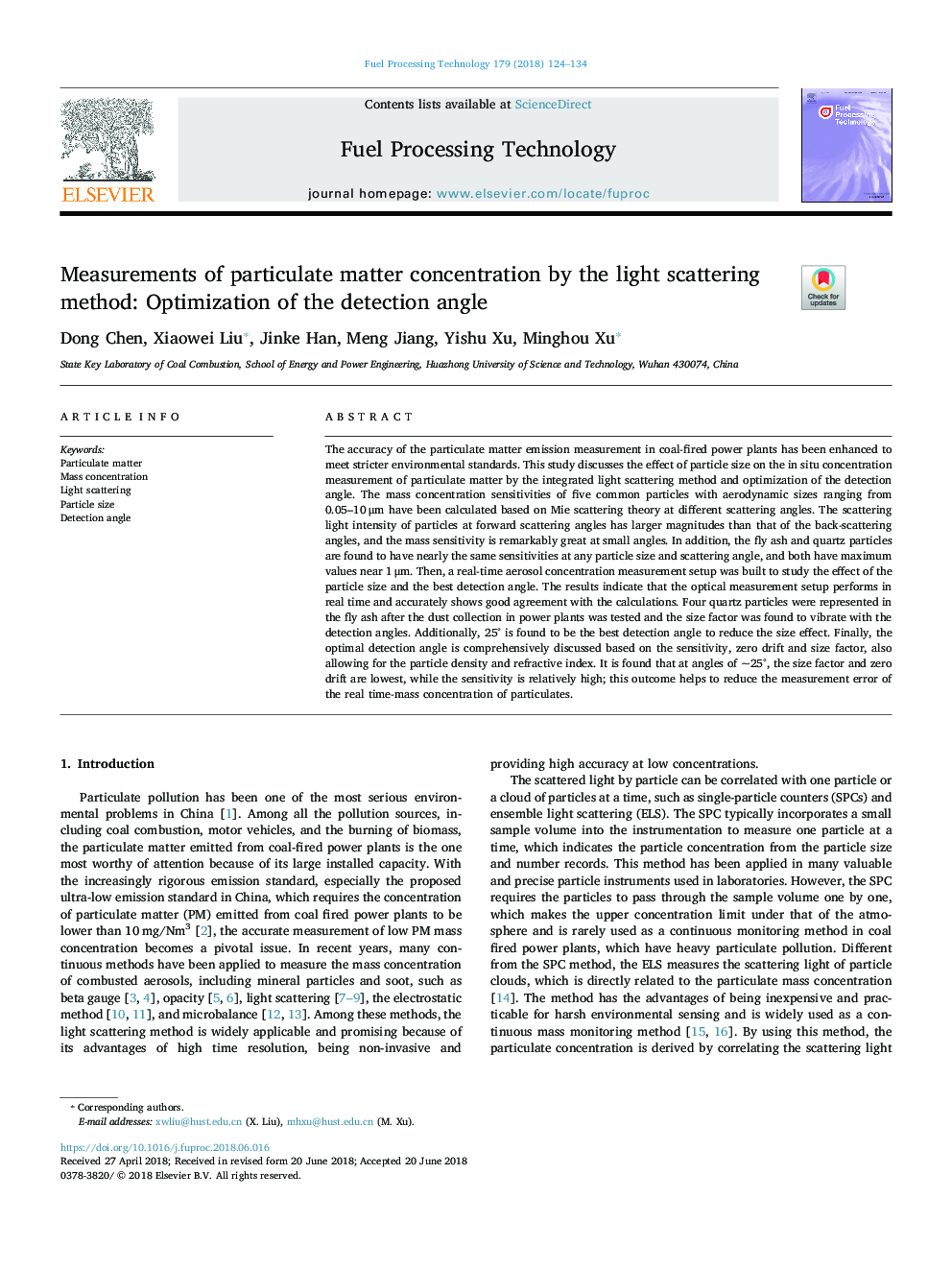| کد مقاله | کد نشریه | سال انتشار | مقاله انگلیسی | نسخه تمام متن |
|---|---|---|---|---|
| 11000582 | 1425367 | 2018 | 11 صفحه PDF | دانلود رایگان |
عنوان انگلیسی مقاله ISI
Measurements of particulate matter concentration by the light scattering method: Optimization of the detection angle
ترجمه فارسی عنوان
اندازه گیری غلظت ذرات با روش پراکندگی نور: بهینه سازی زاویه تشخیص
دانلود مقاله + سفارش ترجمه
دانلود مقاله ISI انگلیسی
رایگان برای ایرانیان
کلمات کلیدی
ذرات جامد، غلظت توده، پراکندگی نور، اندازه ذرات، زاویه تشخیص،
موضوعات مرتبط
مهندسی و علوم پایه
مهندسی شیمی
مهندسی شیمی (عمومی)
چکیده انگلیسی
The accuracy of the particulate matter emission measurement in coal-fired power plants has been enhanced to meet stricter environmental standards. This study discusses the effect of particle size on the in situ concentration measurement of particulate matter by the integrated light scattering method and optimization of the detection angle. The mass concentration sensitivities of five common particles with aerodynamic sizes ranging from 0.05-10â¯Î¼m have been calculated based on Mie scattering theory at different scattering angles. The scattering light intensity of particles at forward scattering angles has larger magnitudes than that of the back-scattering angles, and the mass sensitivity is remarkably great at small angles. In addition, the fly ash and quartz particles are found to have nearly the same sensitivities at any particle size and scattering angle, and both have maximum values near 1â¯Î¼m. Then, a real-time aerosol concentration measurement setup was built to study the effect of the particle size and the best detection angle. The results indicate that the optical measurement setup performs in real time and accurately shows good agreement with the calculations. Four quartz particles were represented in the fly ash after the dust collection in power plants was tested and the size factor was found to vibrate with the detection angles. Additionally, 25° is found to be the best detection angle to reduce the size effect. Finally, the optimal detection angle is comprehensively discussed based on the sensitivity, zero drift and size factor, also allowing for the particle density and refractive index. It is found that at angles of ~25°, the size factor and zero drift are lowest, while the sensitivity is relatively high; this outcome helps to reduce the measurement error of the real time-mass concentration of particulates.
ناشر
Database: Elsevier - ScienceDirect (ساینس دایرکت)
Journal: Fuel Processing Technology - Volume 179, October 2018, Pages 124-134
Journal: Fuel Processing Technology - Volume 179, October 2018, Pages 124-134
نویسندگان
Dong Chen, Xiaowei Liu, Jinke Han, Meng Jiang, Yishu Xu, Minghou Xu,
